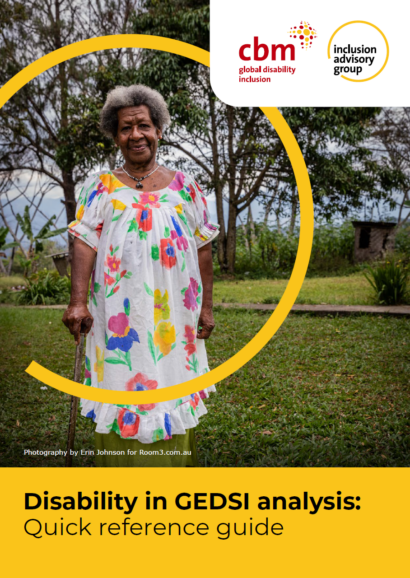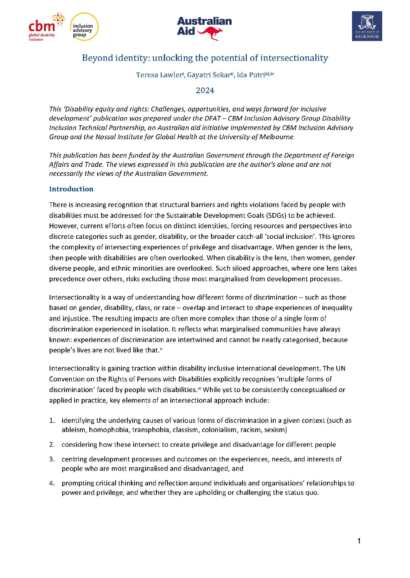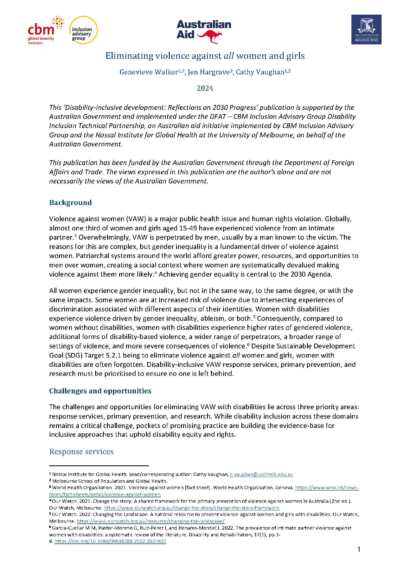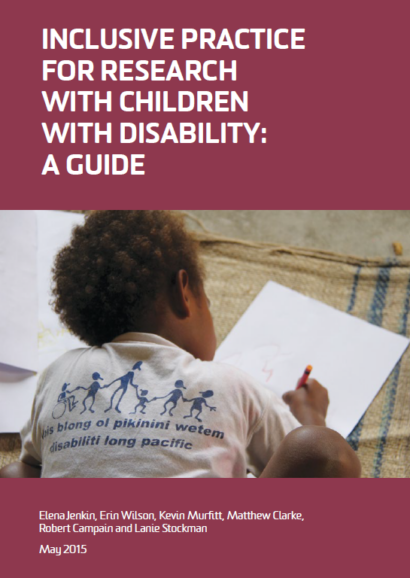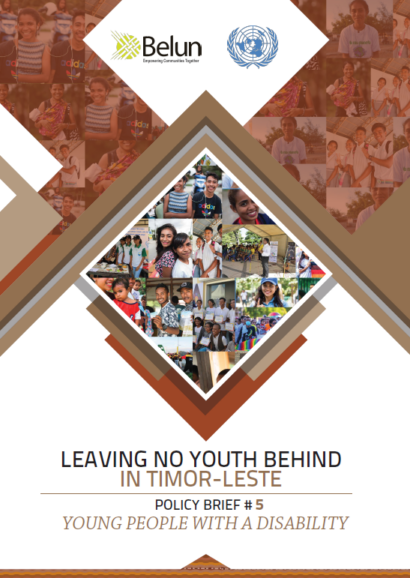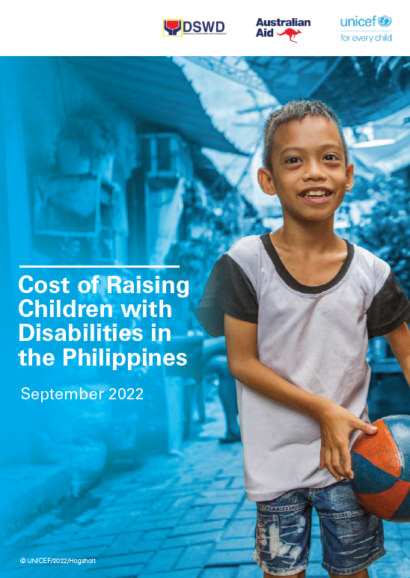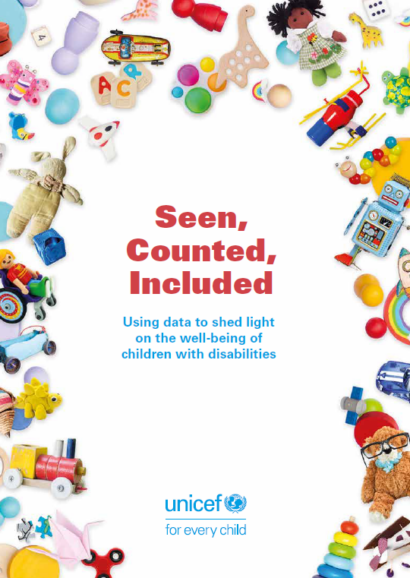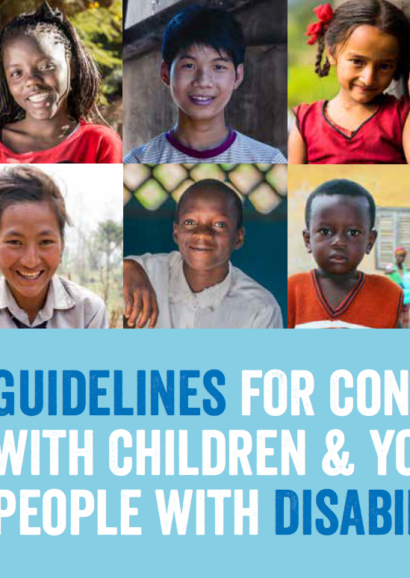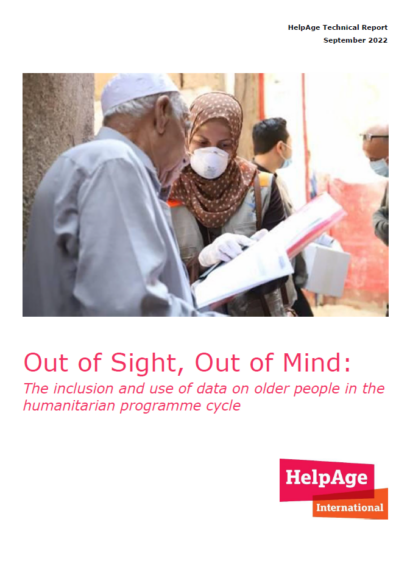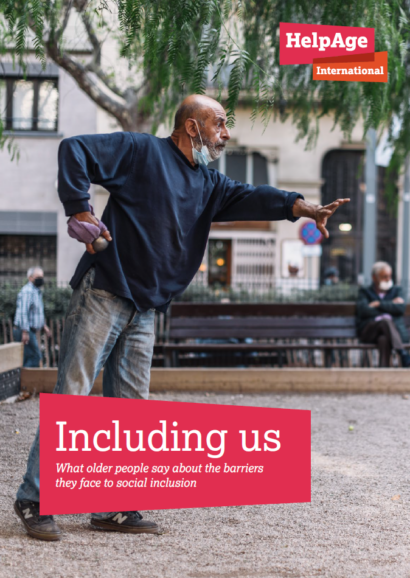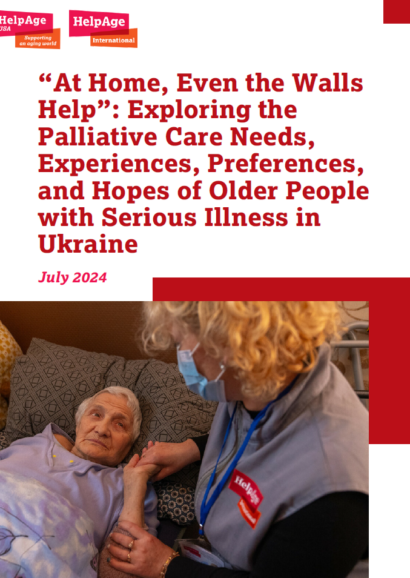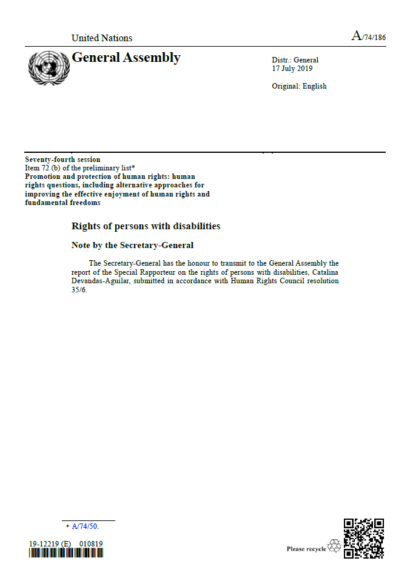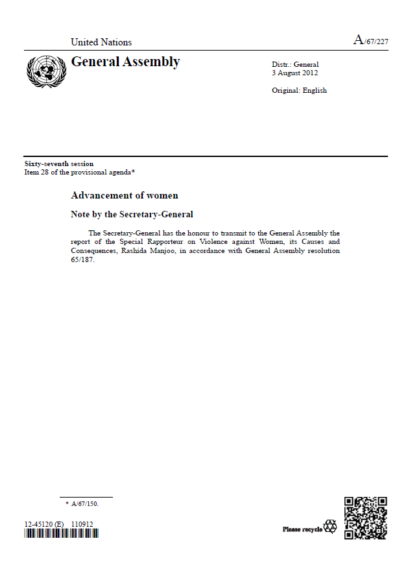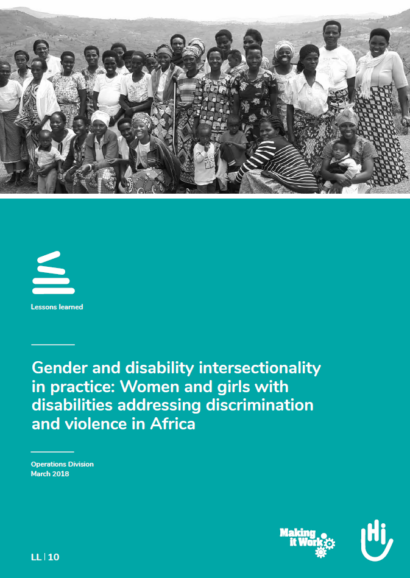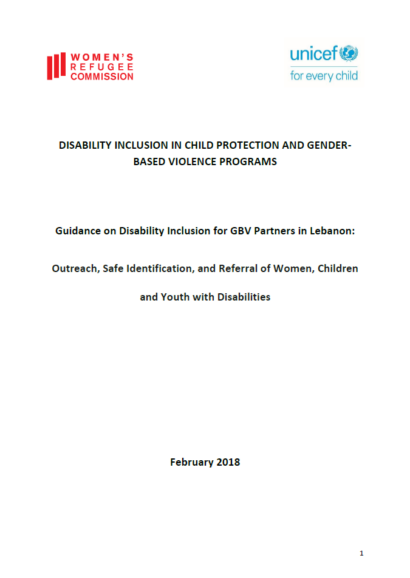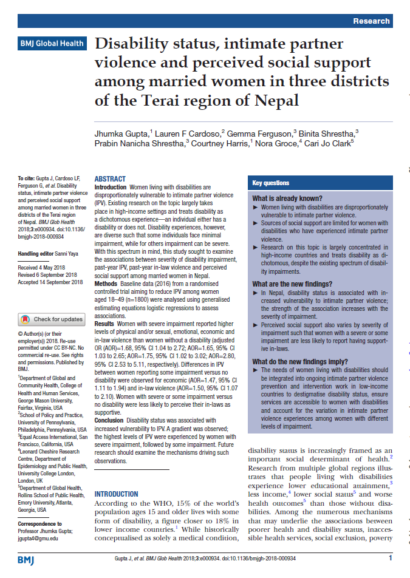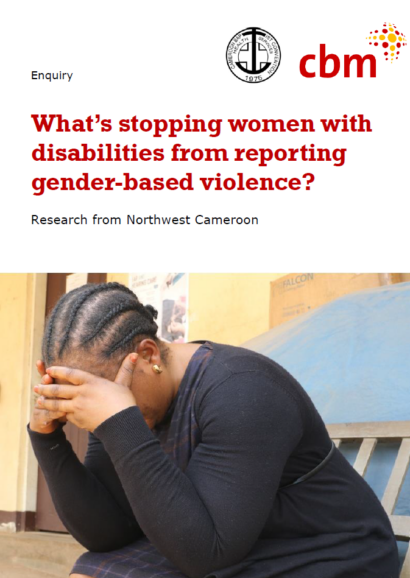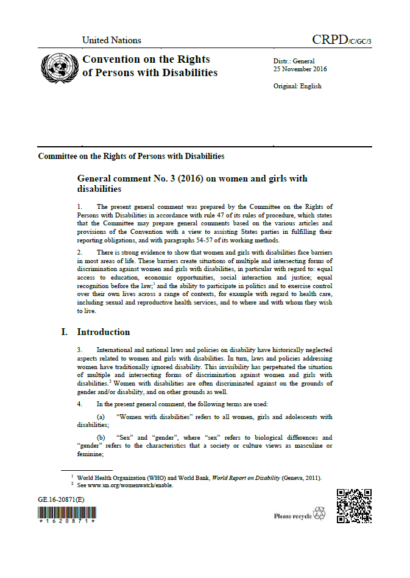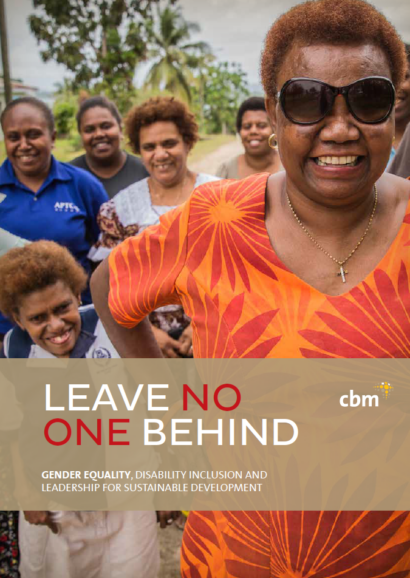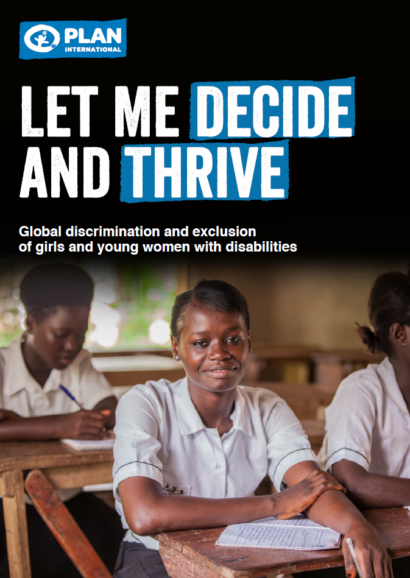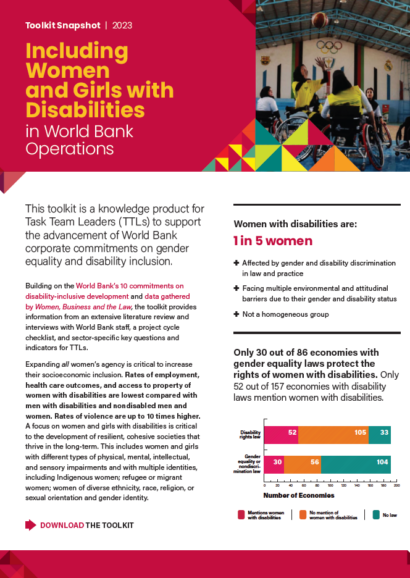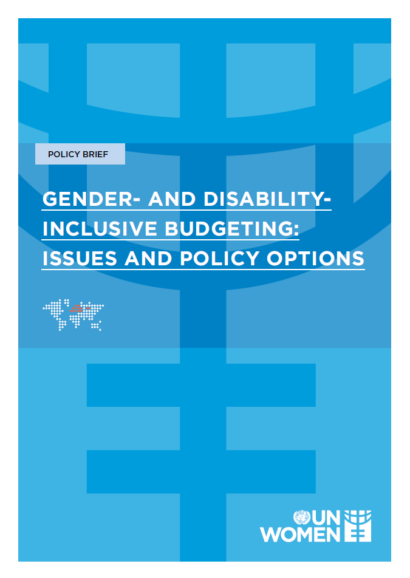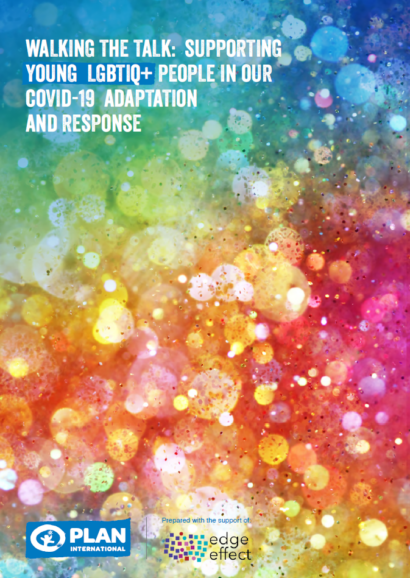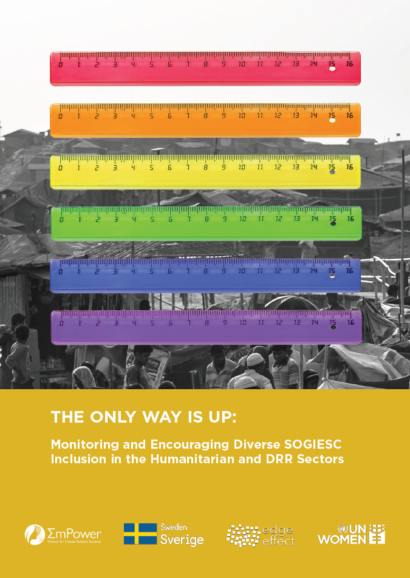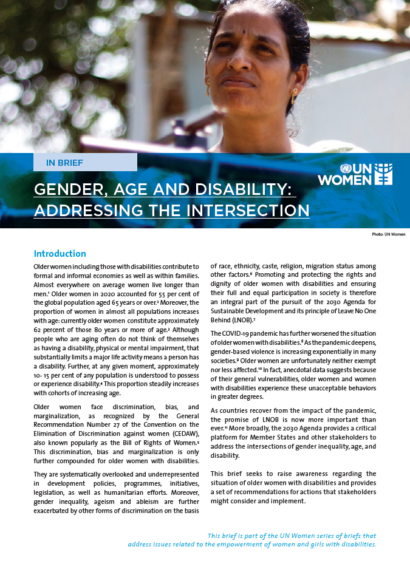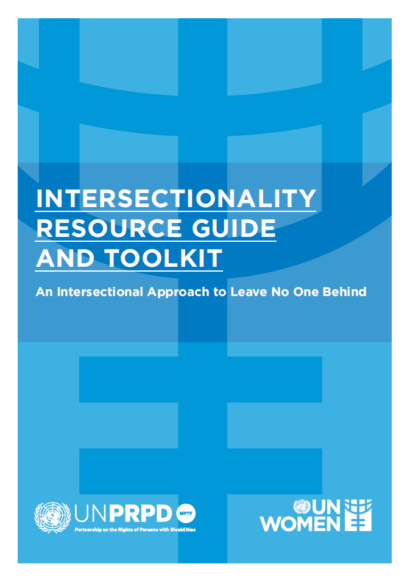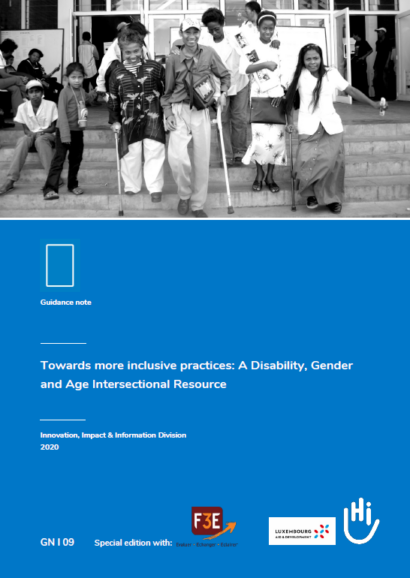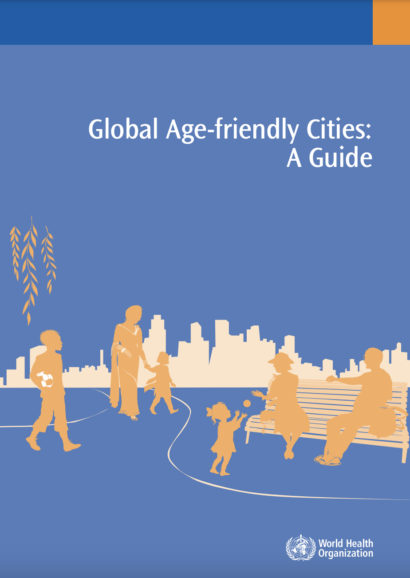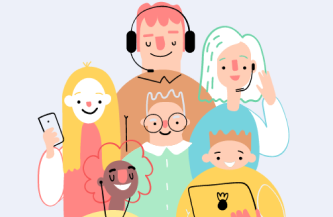Pacific Disability Forum (2025) Mapping the Inclusion of Women and Girls with Disabilities in Gender Programs and Policies in the Pacific: Findings report
This report examines the extent to which mainstream gender programs and stakeholders are including diverse women and girls with disabilities within their gender programs, frameworks, policies and practices.
CBM Global IAG (2025) Disability in GEDSI Analysis: Quick reference guide
This quick reference guide is for Gender Equality, Disability and Social Inclusion (GEDSI) advisors and development practitioners who are undertaking GEDSI analysis and looking to ensure that disability equity and rights are adequately addressed.
CBM-Nossal (2024) Disability Equity and Rights Essay: Beyond identity – unlocking the potential of intersectionality
This ‘Disability equity and rights: Challenges, opportunities, and ways forward for inclusive development’ publication was prepared under the DFAT – CBM Inclusion Advisory Group Disability Inclusion Technical Partnership, an Australian aid initiative implemented by CBM Inclusion Advisory Group and the Nossal Institute for Global Health at the University of Melbourne.
CBM-Nossal (2024) Disability Equity and Rights Essay: Eliminating violence against all women and girls
This ‘Disability equity and rights: Challenges, opportunities, and ways forward for inclusive development’ publication was prepared under the DFAT – CBM Inclusion Advisory Group Disability Inclusion Technical Partnership, an Australian aid initiative implemented by CBM Inclusion Advisory Group and the Nossal Institute for Global Health at the University of Melbourne.
Jenkin, E et al. (2015) Inclusive Practice for Research with Children with Disability: A Guide
This guide presents a set of resources for supporting the involvement of children with disability in research, as well as consultation, policy and service development, monitoring and evaluation.
Human Rights Watch (2022) “It Was Really Hard to Protect Myself”: Impact of the Armed Conflict in Syria on Children with Disabilities
This report examines the specific impact of the conflict in Syria on children with disabilities through detailing the abuses they face, including a heightened risk during attacks and a lack of access to the basic support services they need.
United Nations Timor-Leste (2018) Leaving No Youth Behind in Timor-Leste Policy Brief #5: Young People with a Disability
This policy brief aims to determine the situation of young people with disabilities in Timor-Leste and the barriers they face.
UNICEF (2022) The Cost of Raising Children with Disabilities in the Philippines
This study includes a nationally representative quantitative survey and qualitative in-depth interviews with households and health professionals.
UNICEF (2021) Seen, Counted, Included: Using data to shed light on the well-being of children with disabilities
This report offers the largest compilation of statistics on children with disabilities to date.
Plan International (2016) Guidelines for consulting with children and young people with disabilities
This document provides a guidance on the importance of consulting with children with disabilities.
HelpAge International (2022) Out of Sight, Out of Mind: The inclusion and use of data on older people in the humanitarian programme cycle
This report explores ways to strengthen understanding of older people’s rights and needs within humanitarian responses and the wider humanitarian system through more informed and appropriate collection and use of data at each stage of the humanitarian program cycle.
HelpAge International (2023) Including Us: What older people say about the barriers they face to social inclusion
This paper collates responses from consultations with older people in Colombia, Jordan, Kenya, Philippines and Spain on their experiences of inclusion.
HelpAge International (2024) “At Home, Even the Walls Help”: Exploring the Palliative Care Needs, Experiences, Preferences, and Hopes of Older People with Serious Illness in Ukraine
This report explores the palliative care needs, preferences, and hopes for older people with serious illness in Ukraine.
United Nations Special Rapporteur on the rights of persons with disabilities (2019) Report on the rights of older persons with disabilities
In this report, the Special Rapporteur on the rights of persons with disabilities examines the situation of older persons with disabilities, and provides guidance to States on how to promote, protect and ensure their human rights and fundamental freedoms, paying particular attention to the intersection between ageing and disability.
UNFPA (2018) Young Persons with Disabilities: Global Study on Ending Gender-based Violence and Realizing Sexual and Reproductive Health and Rights
This study by UNFPA provides an analysis on the situation of young people with disabilities concerning discrimination and gender-based violence, including the impact on their sexual and reproductive health and rights.
United Nations Special Rapporteur on violence against women and girls, its causes and consequences (2012) Advancement of Women
This report provides an overview of the activities of the Special Rapporteur on violence against women and girls, its causes and consequences and discusses the issue of violence against women with disabilities.
Humanity & Inclusion (2018) Gender and disability intersectionality in practice: Women and girls with disabilities addressing discrimination and violence in Africa
This report documents nine examples of good practices across six African countries relating to the elimination and response to violence, abuse and exploitation of women and girls with disabilities.
Women’s Refugee Commission & UNICEF (2018) Guidance on Disability Inclusion for GBV (Gender-Based Violence) Partners in Lebanon: Outreach, Safe Identification, and Referral of Women, Children and Youth with Disabilities
This resource is designed to support frontline workers, community volunteers and mobilizers who are working in gender based violence (GBV) prevention and response, and their supervisors, to foster inclusion of persons with disabilities in their community activities.
Gupta, J et al. (2018) Disability status, intimate partner violence and perceived social support among married women in three districts of the Terai region of Nepal
This study examines the associations between severity of disability impairment, past-year intimate partner violence (IPV), past-year in-law violence, and perceived social support among married women in Nepal.
CBM Australia & Cameroon Baptist Convention (2022) What’s stopping women with disabilities from reporting gender based violence?
This study was undertaken by CBM Australia’s partner, the Cameroon Baptist Convention, to better understand what stops women and girls with disabilities in the Northwest region of Cameroon from reporting incidents of sexual violence and domestic abuse.
Committee on the Rights of Persons with Disabilities (2016) General Comment No 3 – Article 6: Women and girls with disabilities
Article 6 of the Convention on the Rights of Persons with Disabilities (CRPD) is a response to the lack of recognition of the rights of women and girls with disabilities.
CBM Australia (2018) Leave No One Behind: Gender equality, disability inclusion and leadership for sustainable development
This report highlights the discrimination that exists at the intersection of gender, disability and poverty and how this affects women and girls with disabilities in accessing employment, education, and health care.
CBM (2019) CBM Disability and Gender Analysis Toolkit
The purpose of this toolkit is to help CBM staff to ‘walk the talk’ on disability and gender equality.
Plan International (2017) Let Me Decide and Thrive: Global Discrimination and Exclusion of Women and Girls with Disabilities
This report calls for all children with disabilities to be provided comprehensive sexuality education so they can make conscious choices about relationships and sexuality.
World Bank (2023) Including Women and Girls with Disabilities in World Bank Operations
The toolkit lists the commitments of the World Bank Group to women with disabilities as well as examples of law and policy reform, key barriers and solutions across several World Bank sectors, and a checklist for World Bank project teams.
UN Women (2023) Gender- and disability-inclusive budgeting: Issues and policy options
This policy brief from UN Women identifies emerging practices on gender and disability-inclusive budgeting.
CBM Australia (2023) Gender Equality and Disability Equity
This paper summarises key contexts related to women with disabilities.
Plan International (2020) Walking the Talk: Supporting Young LGBTIQ+ People in our COVID-19 Adaptation and Response
This briefing paper was prepared to help humanitarian and development practitioners protect and empower LGBTIQ+ youth by including them in response to crises and program adaptations.
Edge Effect & UN Women (2021) The Only Way Is Up: Monitoring and Encouraging Diverse SOGIESC Inclusion in the Humanitarian and DRR Sectors
This study provides accounts of lived experience from Cox’s Bazar, Mindanao and Vanuatu detailing the ways in which people with diverse sexual orientation, gender identity, gender expression, and sex characteristics (SOGIESC) are excluded from humanitarian and disaster risk reduction (DRR) programs.
Edge Effect (2021) “We Don’t Do A Lot For Them Specifically”: A scoping report on gaps and opportunities for improving diverse SOGIESC inclusion in cash transfer and social protection programs, during the COVID-19 crisis
This study explores whether mainstream or targeted social protection programs have met the needs of people with diverse sexual orientations, gender identities and expressions, and sex characteristics (SOGIESC, aka LGBTIQ+ people).
Edge Effect & CBM Global IAG (2020) Out of the Margins: An intersectional analysis of disability and diverse sexual orientation, gender identity, expression & sex characteristics in humanitarian and development contexts
This paper explores and builds on the understanding of the intersection of people with disabilities and diverse sexual orientation, gender identity and/or expression, and sex characteristics (SOGIESC) in development and humanitarian contexts.
UN Women (2022) Gender, age, and disability: Addressing the intersection
This brief by UN Women seeks to raise awareness regarding the situation of older women with disabilities by focusing on the intersection of gender, age, and disability.
UN Women (2021) Intersectionality resource guide and toolkit
This toolkit aims to help both organisations and individual practitioners and experts to address intersectionality in policies and programs
Stubbs D & Tawake S (2009) Pacific sisters with disabilities: At the intersection of discrimination
This study identifies the issues and challenges faced by women and girls with disabilities in the Pacific and analyses the social and economic factors impacting on their human rights.
Humanity & Inclusion (2020) Towards more inclusive practices: A Disability, Gender and Age Intersectional Resource
This resource supports international development program staff to better understand the intersection between gender and disability, as well as touching on age.
World Health Organization (WHO) (2007) Global age-friendly cities: a guide
This guide published by WHO describes the trends of population ageing and urbanisation.


